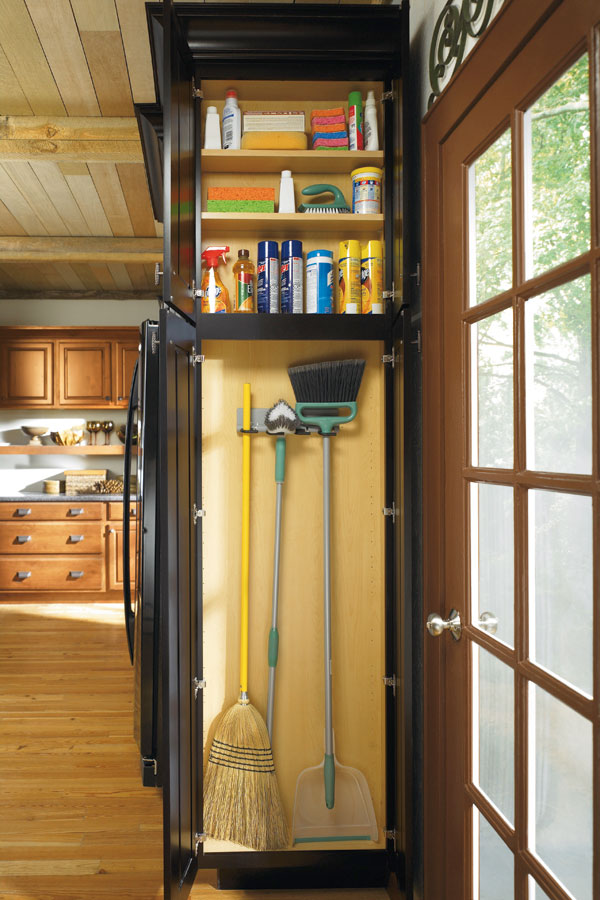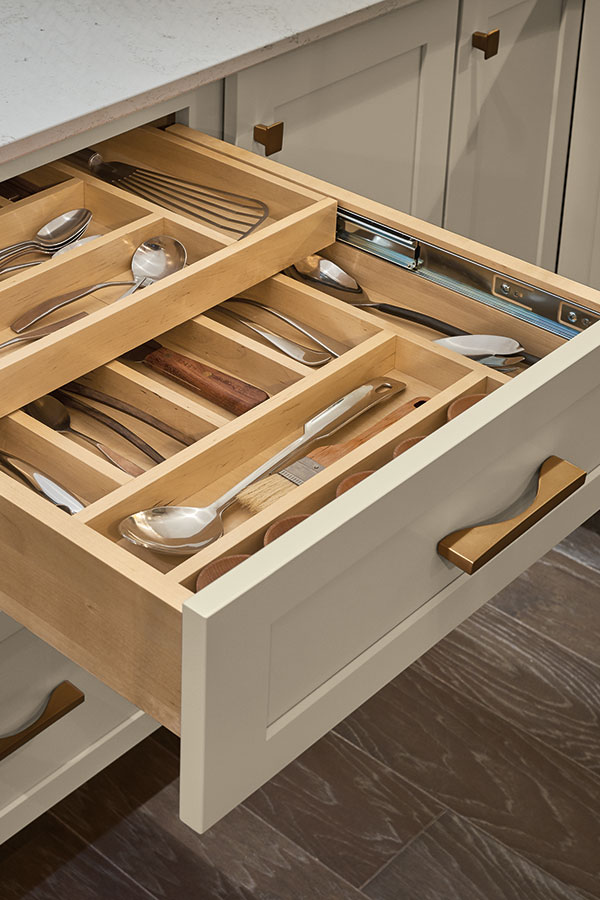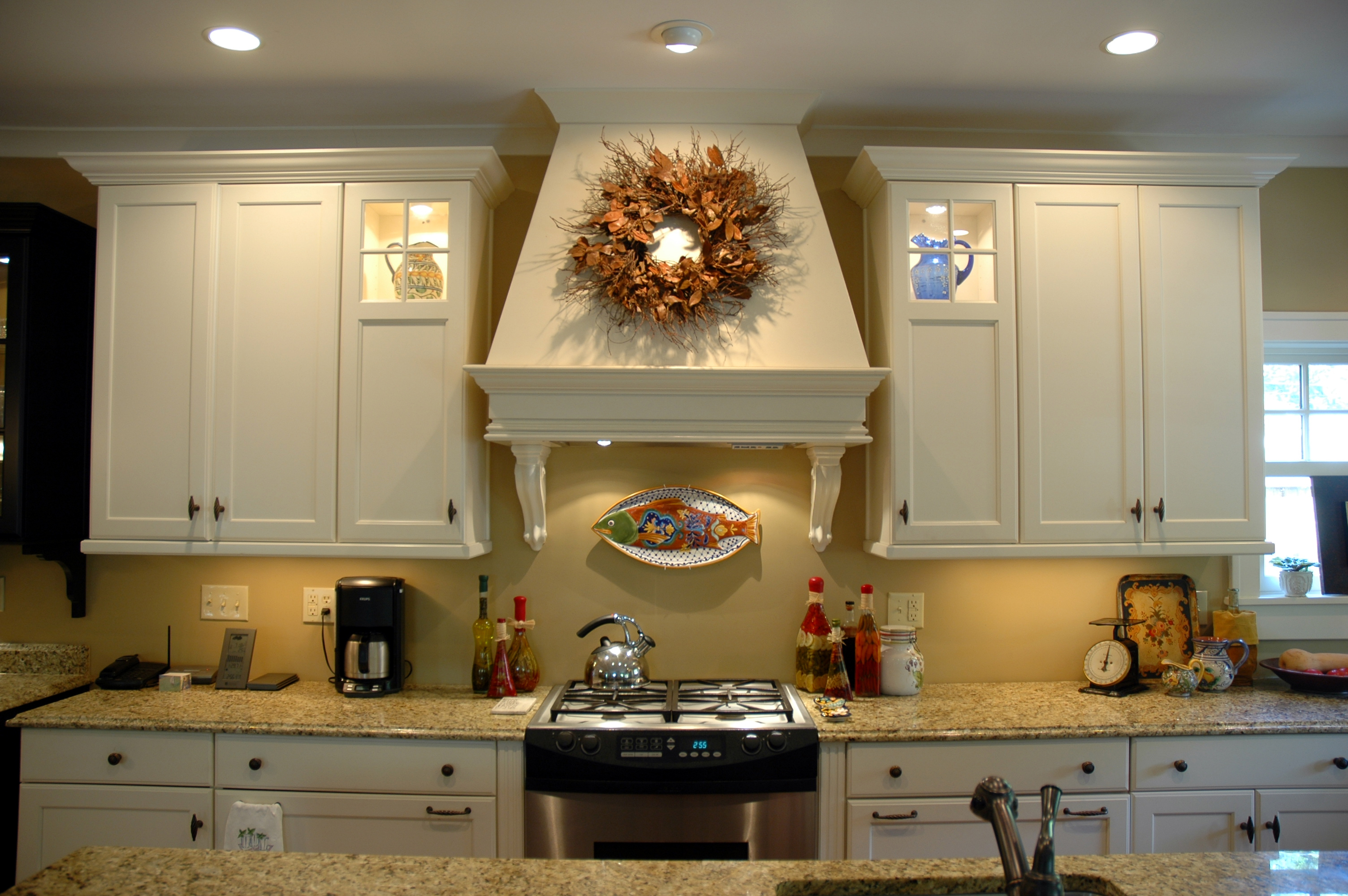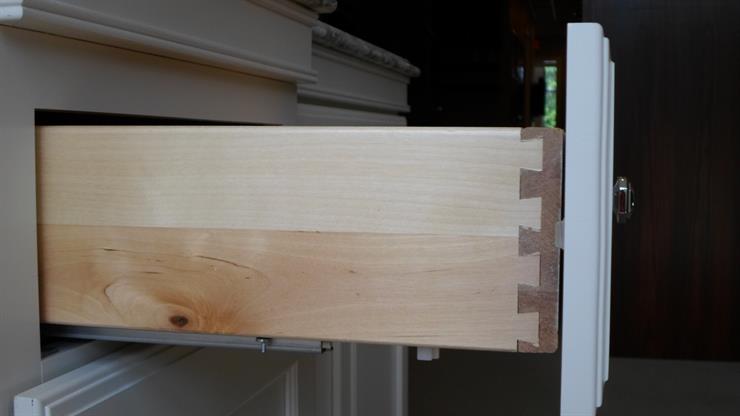Cabinet drawers -- they house a variety of items that we use on a daily basis, from kitchen utensils to pens and pencils. Kitchen cabinet drawers are opened regularly, some as much as 5 to 10 times a day. This adds up to more than 3,600 times per year! We depend not only on the functionality of the drawer, but also on its durability. Joint design is an important aspect of the drawer's durability due to the stress the drawer incurs with each opening and closing. This is what makes a dovetail joint so desireable.
Two factors determine the strength of a joint ... 1) how the two pieces of wood are connected and 2) the size of the gluing area. In a dovetail joint, a series of pins are cut into the end of a piece of wood which interlocks with a series of tail cuts in the end of another board. Once glued, a dovetail joint creates such a strong bond, no additional mechanical fasteners are required. Below is a picture of a dovetail drawer joint.
The dovetail is one of the strongest joints used in cabinet construction. The pins and tails can only be joined together in one direction, similar to putting your hand in a glove. Once the glove is on, it will not come off except by sliding your hand out. When a drawer is opened, the pressure actually makes the joint tighter. In addition to locking mechanically, the joint creates a very large surface area for gluing. The more glue in a joint, the stronger the joint will be.
The dovetail joint is indicative of quality cabinets and a high level of craftsmanship. Drawers with this type of joint are superior to those constructed simply with a stapled or glued drawer front. With its increased strength and durability, the dovetail joint is an excellent choice for your cabinet drawers.





